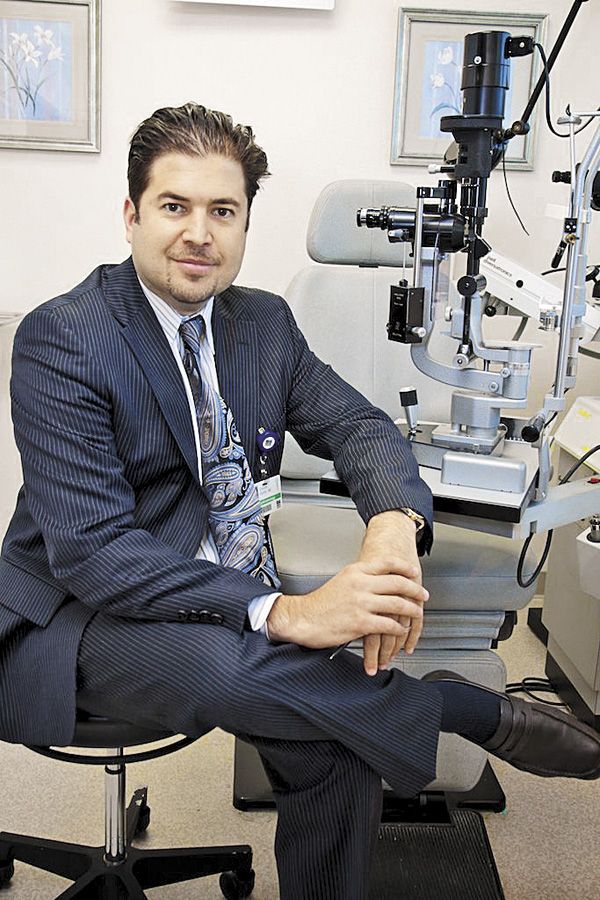Article
Tapping into toric technology
Cataract surgeons wanting to tap into the premium IOL market might consider implanting toric IOLs.
TAKE HOME: Cataract surgeons wanting to tap into the premium IOL market might consider implanting toric IOLs.
Newport Beach, CA-Ophthalmologists who perform cataract surgery can add value to their practice by offering toric IOLs, suggests one surgeon.

Dr. Sadri“Toric technology is the fastest-growing segment of the premium IOL market, with the number of units implanted expected to increase from about 286,000 in 2012 to more than 501,000 in 2017,” said Ehsan Sadri, MD, private practice, Atlantis Eyecare, Newport Beach, CA.
“There is a large pool of potential candidates for toric IOLs, considering that clinically significant astigmatism of at least 1 D affects as many as half of patients presenting for cataract surgery,” Dr. Sadri said. “This population represents ‘low-hanging fruit’ to convert to a premium IOL procedure, because they understand astigmatism and recognize that it can be visually problematic.”
Currently, U.S. surgeons may choose from among three monofocal toric IOLs, said Dr. Sadri, who noted that in his experience a single-piece, silicone toric IOL (AA4203TF/AA4203TL, STAAR Surgical) stands out in several ways.
“[This] toric IOL has the longest track record of all of the available toric IOLs, and its lower price reduces the patient’s out-of-pocket expense,” Dr. Sadri said. “Not all eyes require aspheric optics, and in fact, a non-aspheric optic is preferred for patients who have had LASIK for hyperopia.
“Compared with acrylic lenses, the silicone material has a lower refractive index that causes fewer optical aberrations and minimizes problems with halos, glare, and glistening,” he said.
With its single-piece construction the implant is easy and straightforward to use, and in its current iteration it is well designed to maintain rotational stability. Once implanted, the toric IOL can be rotated clockwise or counterclockwise as needed for final orientation. Whereas off-axis rotation was an issue with the original version of the STAAR toric IOL, this problem has been successfully addressed through design improvements that include an increase in total length along with the introduction of micro-etched haptics and larger fenestrations.
“[This] toric IOL is very user-friendly technology and is very stable,” Dr. Sadri said. “Lengthening of its diameter increases rotational stability, especially in larger myopic eyes; the larger fenestrations allow for better encapsulation of the IOL at the capsule equator; and the micro-etching of the haptics has been shown to increase adhesion during the healing process.
“Results from studies evaluating repositioning rates for toric IOLs show essentially similar results among patients with the STAAR platform implanted versus a competing acrylic model,” he said.
Toric tips
In order to maximize outcomes when implanting this toric IOL, Dr. Sadri said the capsulorhexis should be no larger than 5.5 or 5.6 mm. It is also helpful to minimize balanced salt solution infusion of the anterior segment, since having the eye relatively but safely soft enables immediate collapse of the capsular bag around the IOL.
Use of a cohesive viscoelastic is preferred as it coats the IOL surface less than a dispersive material. However, surgeons must be meticulous in removing the viscoelastic from behind the IOL at the end of surgery to maximize contact with the posterior capsule.
“Be sure to confirm lens orientation after this step and then again after hydrating the wound,” Dr. Sadri said.
Getting started
The IOL is available in two cylinder powers: –2 D that corrects 1.5 D of corneal astigmatism, and 3.5 D that corrects 2.25 D. Surgeons who are first using the lens might consider taking a conservative approach and focus on implanting the lower power IOL in eyes with up to 2 D of astigmatism.
Ehsan Sadri, MD
Dr. Sadri is a consultant to Abbott Medical Optics and STAAR Surgical. This article was adapted from Dr. Sadri’s presentation at the STAAR Surgical booth during the 2013 meeting of the American Society of Cataract and Refractive Surgery.
Subscribe to Ophthalmology Times to receive the latest clinical news and updates for ophthalmologists.





